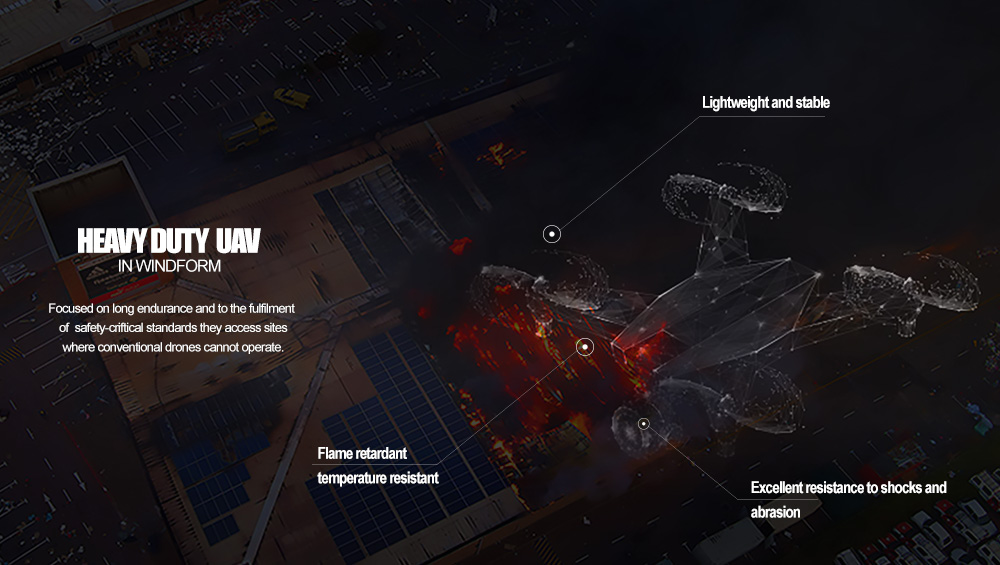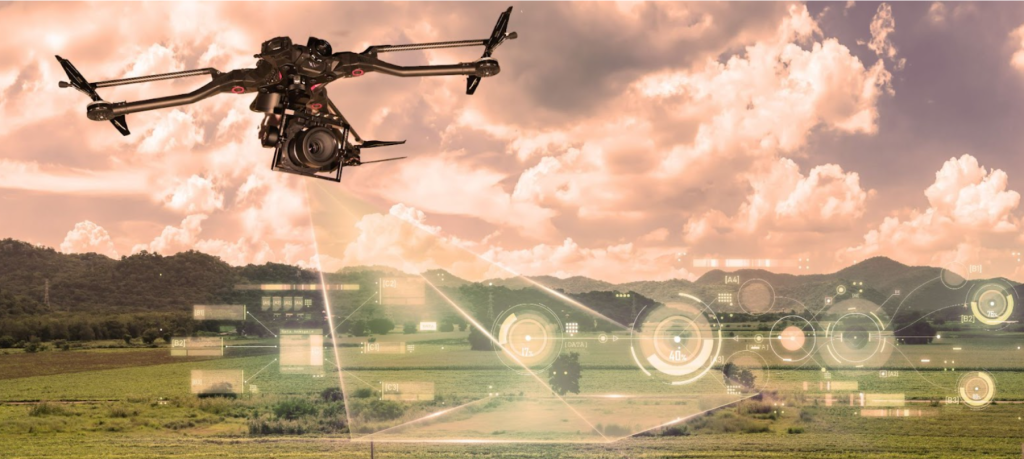Selecting the right material for security drones is crucial. This is an area CRP Technology, a provider of 3D printing services and materials, specializes in as it’s long been a player in the 3D printed surveillance drone market.
CRP has created a whole range of Windform TOP-LINE fiber-reinforced composites dedicated to selective laser sintering (SLS) technology. The mechanical performances and durability offered by Windform materials improve the operations of premium surveillance UAVs by adding a whole new range of vital capabilities.
The firm also sees a synergistic relationship between industrial additive manufacturing and drone technologies, with both spheres evolving at rapid rates. Product designers are finding 3D printing to be an extremely valuable tool when it comes to fabricating custom end-use drone parts that provide bespoke functionalities for unique scenarios.

The power of the Windform TOP-LINE range
Founded in 1970, CRP’s original business revolved around creating innovative motorsport solutions for Formula 1. The firm eventually established CRP Technology, a subsidiary devoted to industrial 3D printing materials and manufacturing-grade 3D printing technologies.
The company has been considered a pioneer in additive manufacturing, inventing the Windform family of high-performance materials for durable, complex, and custom designs with excellent lead times in delivering 3D printed functional parts. With almost three decades of innovation in additive manufacturing, CRP has made major investments in materials science and has hands-on experience with additive manufacturing as a supplier of innovative solutions for the racing, aerospace, design, medical, and entertainment spheres.
CRP Technology debuted its first Windform 3D printing material in 1996. This was later succeeded by Windform XT in 2004, which is thought to be the first carbon fiber-reinforced composite for SLS.
Building on the company’s background in motorsports, the current range of Windform TOP-LINE composites covers just about every property you might need in an industrial setting, as well as military-grade solutions suited for harsh environments. This includes high strength-to-weight ratios, rigidity, excellent impact resistance, heat and fire resistance, water and fluid resistance, and electrical conductivity and insulation. The more recent materials developments aim to breathe life into new 3D printed products that increase sustainability without compromising reliability.
Modular design and flexibility at their best
The design freedom offered by SLS 3D printing paves the way for highly customised drone hardware. For example, a lightweight 3D printed frame could eliminate many of the smaller components that go into a drone, consolidating them into one monolithic part with integrated cavities and fittings. As well as slashing material use and saving costs, this can drastically reduce lead times on custom geometries that would otherwise take weeks or months to source via conventional manufacturing.
Additive manufacturing also paves the way for optional toolkits for just about any scenario. In essence, 3D printing makes it possible to design and fabricate additional modular snap-fit arms and tools that can house cameras, sensors, radio communication devices, and other electronic equipment. This flexibility is imperative for emergencies and means component compatibility don’t doesn’t pose an issue.
On the materials side of things, Windform even enables electrically conductive, static dissipative, and insulated floor components, allowing for a plethora of electronics to be used in tandem in one system.

Shock resistant and flame retardant
Much like anything that flies, the weight of a professional drone is key to its performance, but ruggedness and stability are also important factors. Similarly, multi-functional drones need to be able to operate at full capacity in all manner of harsh environmental conditions.
In the case of a rescue operation, a drone might need to be used to assess the terrain of a location in a very short space of time. A situation like this calls for impact resistance, and a casing made of Windform would help protect a drone against shocks and falls.
Similarly, when assessing the severity of a flaming building, drones provide a quick and easy way to evaluate the intensity of a fire with a bird’s eye view. Here, the flame retardant properties of Windform would allow a drone to fly in conditions where a conventional counterpart might just melt. Some of CRP Technology’s materials offer an excellent HDT of 191°C and melting points of up to 197°C.
Ultimately, CRP Technology hopes to grant manufacturers a new level of design control with their custom 3D printed drone products. The firm states that surveillance and security operations are some of the biggest development areas in the UAV industry, with Windform proving to be an invaluable tool in the sector.
For more information, visit CRP Technology and Windform.
Subscribe to the 3D Printing Industry newsletter for the latest news in additive manufacturing. You can also stay connected by following us on Twitter, liking us on Facebook, and tuning into the 3D Printing Industry YouTube Channel.
Looking for a career in additive manufacturing? Visit 3D Printing Jobs for a selection of roles in the industry.
Featured image shows the Windform 3D printed Tundra-M drone. Image via CRP Technology.



